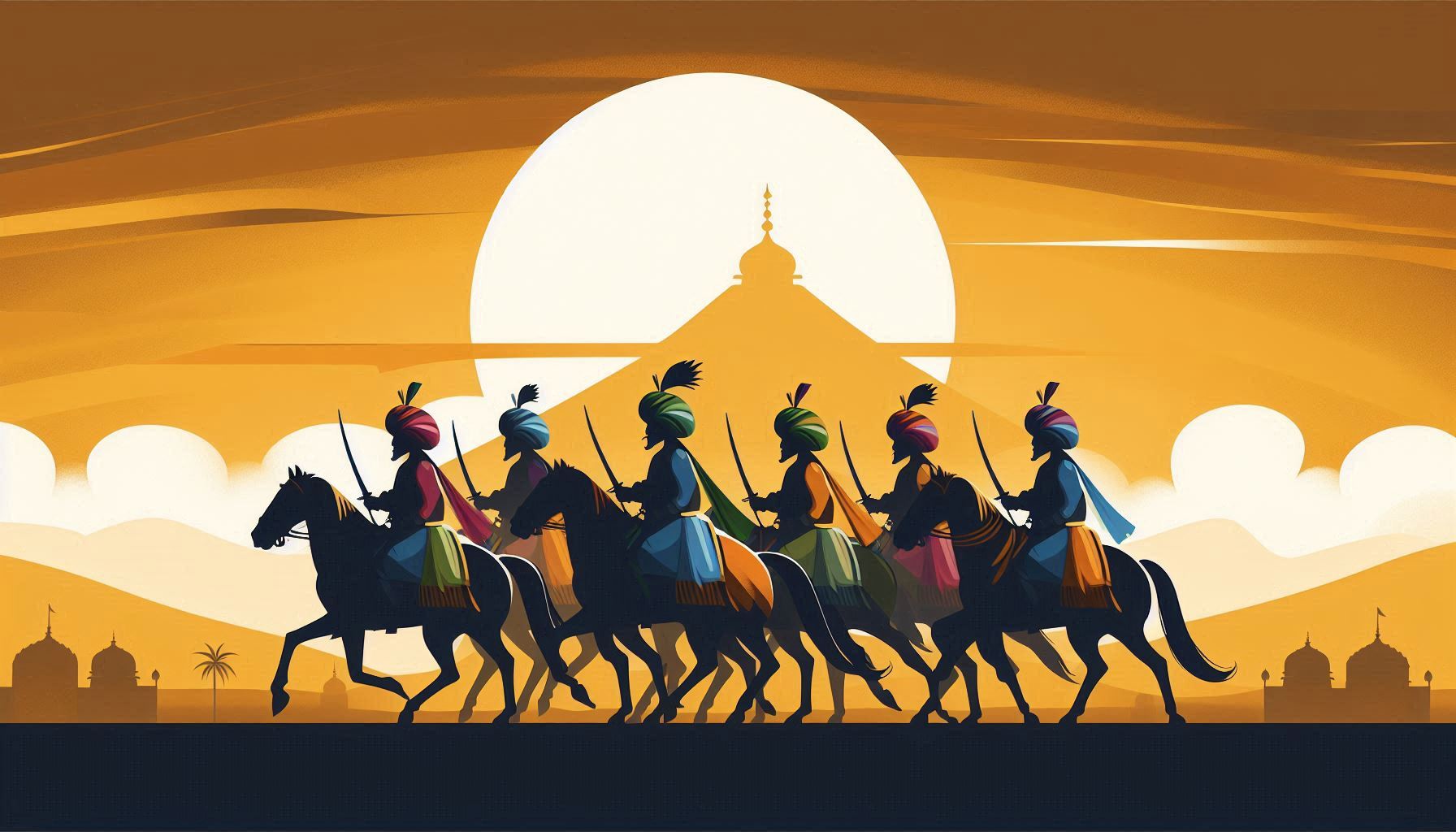The Chauhans of Sirohi, also known as the Devda Chauhans, were a Rajput dynasty that ruled the Sirohi state in the southern part of Rajasthan from the 14th to the 20th century CE.
They were a branch of the Songara Chauhan clan, and claimed descent from Rao Deoraj, a son of Rao Lakhan of Nadol, who was a descendant of Anal Chauhan. They established their rule over Sirohi with the help of the Bhil and Garasia tribes, who recognized them as their chiefs.
They expanded their kingdom through wars and alliances with the neighbouring kingdoms of Mewar, Marwar, Malwa, Delhi, and Gujarat.
They also built several forts, palaces, temples, and monuments, including the famous Achaleshwar Mahadev Temple, Sirohi Fort, and Sarvadham Temple. Their last ruler, Tej Ram, acceded to the newly formed Indian Union in 1948.
Mighty Chauhan Kings in Sirohi
The following table lists the names and reigns of the Chauhan rulers of Sirohi, along with their notable achievements and events.
| Name | Reign | Achievements and Events |
|---|---|---|
| Lumba | c. 1311-1347 CE | The founder of the dynasty, he was a grandson of Rao Deoraj and a scion of the younger branch of the Chauhan rulers of Jalore. He seized the town of Abu from the Parmars, and thus founded a dynasty that was to rule the surrounding area for over six centuries. He also built the Achaleshwar Mahadev Temple, dedicated to Lord Shiva. |
| Shivbhan | c. 1347-1370 CE | He was a son of Lumba, and succeeded him as the ruler of Sirohi. He fought against the Delhi Sultanate, and allied with the Mewar king Lakshman Singh against the Sultan Firuz Shah Tughlaq. |
| Sahasmal | c. 1370-1405 CE | He was a son of Shivbhan, and succeeded him as the ruler of Sirohi. He was a patron of art and culture, and invited several poets and scholars to his court. He also built the Sirohi Fort, and the Sarvadham Temple, dedicated to various Hindu deities. |
| Jagmal | c. 1405-1430 CE | He was a son of Sahasmal, and succeeded him as the ruler of Sirohi. He was a brave and ambitious ruler, who expanded his kingdom by conquering several neighbouring territories. He also built the Jagmal Sagar, a large lake near Sirohi. |
| Surtan | c. 1430-1485 CE | He was a son of Jagmal, and succeeded him as the ruler of Sirohi. He was a valiant and devout ruler, who defended his kingdom against the attacks of the Gujarat Sultanate and the Delhi Sultanate. He also performed several yajnas and pilgrimages. |
| Battle of Datani (Sirohi) – 1583 AD | – | The most famous event of Surtan’s reign was the Battle of Datani, fought in 1583 CE, between the forces of Sirohi and the Mughal Empire. The Mughal emperor Akbar had sent a large army under his general Asaf Khan to subjugate Sirohi. Surtan, along with his sons and allies, resisted the invasion with great courage and skill. The battle lasted for three days, and resulted in heavy casualties on both sides. Surtan and his sons were killed in the battle, but they inflicted such a severe blow to the Mughal army that Asaf Khan had to retreat. The battle is considered as one of the finest examples of Rajput heroism and sacrifice. |
| Court Scholar | – | The most famous court scholar of Surtan was Kaviraj Shyamaldas, who composed the Sirohi Rajvansh Prakash, a Sanskrit chronicle of the history and legends of the Sirohi dynasty. He also wrote several other works on grammar, philosophy, and astrology. |
| Man Singh | c. 1485-1520 CE | He was a son of Surtan, and succeeded him as the ruler of Sirohi. He was a wise and benevolent ruler, who maintained peace and prosperity in his kingdom. He also built the Man Sagar, another large lake near Sirohi. |
| Bairisal | c. 1520-1555 CE | He was a son of Man Singh, and succeeded him as the ruler of Sirohi. He was a devout Hindu, who performed several yajnas and pilgrimages. He also built the Bairisal Sagar, the fourth large lake near Sirohi. |
| Shiv Singh | c. 1555-1595 CE | He was a son of Bairisal, and succeeded him as the ruler of Sirohi. He was a valiant and ambitious ruler, who expanded his kingdom by conquering several neighbouring territories. He also built the Shiv Sagar, the fifth large lake near Sirohi. |
Achaleshwar Mahadev Temple
The Achaleshwar Mahadev Temple is one of the most prominent landmarks of Sirohi, and a major pilgrimage site for the Chauhans and other Rajputs of the region. The temple was built by the first Chauhan ruler of Sirohi, Lumba, in the 14th century CE.
He dedicated the temple to Lord Shiva, who is also known as Achaleshwar, meaning the “immovable lord”. The temple is built in the Nagara style of architecture, and has a sanctum, a mandapa, and a shikhara. The temple also has several sculptures and inscriptions, depicting the history and legends of the Chauhans.
Conclusion
The Chauhans of Sirohi were a powerful and illustrious Rajput dynasty that ruled the Sirohi state for over six centuries. They were known for their courage, generosity, piety, and patronage of art and culture.
They left behind a rich legacy of architecture, painting, and literature, which can be seen in their capital Sirohi and other places.
They were also instrumental in resisting the foreign invasions and preserving the Rajput identity and pride. They are remembered as one of the glorious dynasties of Rajasthan and India.
